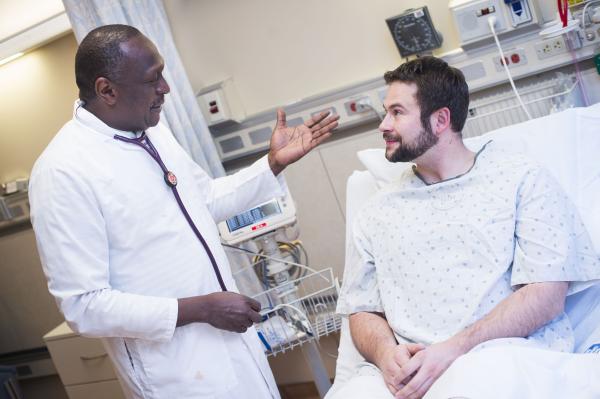Authors of a newly published piece in The New England Journal of Medicine sought to provide an analysis of who ought to be responsible for obtaining a patient’s consent. They conclude, upon discussion of a recent Pennsylvania Supreme Court ruling in Shinal v. Toms which held that a treating physician could not “fulfill through an intermediary the duty to provide sufficient information to obtain a patient’s informed consent,” that this definition is too rigid, inefficient and out of step with shifting team-centered approaches to care delivery. This in itself is a misnomer given medical care has always been driven by teams - including but not limited to dedicated physicians, nurses, therapists, lab technicians - and disregards the harmful reality too many cooks in the kitchen has in perpetuating the game of telephone - often serving to confuse instead of calm a patient. In their argument, they largely ignore and thereby dilute the profound importance of informed consent by equating the task as interchangeable with delegable duties. It is not.
In placing informed consent for a surgery, chemotherapy or implantation of an experimental device that can potentially yield long-term irreversible challenges, even death on par with transferable skills like computer data entry, reporting on a normal lab value or general discussion on diseases and treatments, the authors fail to prioritize and preserve fundamental bioethics principles (1) and their intertwined value in cementing and maintaining a trusted doctor-patient relationship without which there cannot be patient-centered medicine. The best person to advise on course of treatment in these scenarios and alternative options is the operating physician - not his non-treating physician partner, physician assistant who may or may not be present in the case, nurse or resident for that matter.
If care is truly patient-centered, then being assured under these circumstances that a patient is fully informed by the individual most suited for the task - the person the patient sought out in the first place - is paramount. While the authors acknowledge in their vision of a loosened standard the buck should stop with the treating physician thereby allowing him to designate responsibilities to supporting staff as opposed to permitting him to pass the buck entirely, they offer random auditing of such conversations with patients by team members as a check and balance measure.
Here’s the rub. We are talking about life and death or disability decisions that a patient has entrusted to his physician, in his absence he cannot guarantee shared-decision making, the accuracy of understanding or presentation of conflicting information. These conversations are essential to fulfilling the core duty of being a physician and engendering trust from a patient (that is free of coercion). When the buck does stop with you as the treating physician whose actions and guidance can yield such consequences, you have a unique and complete understanding of the ramifications of consent and its complexity.
The majority opinion in the Shinal decision seeks to preserve the “primacy of the physician-patient relationship” arguing that “[w]ithout direct dialogue and a two-way exchange between physician and patient, the physician cannot be confident the patient comprehends the [necessary information].” With the many competing profit centers, advent of electronic medical records otherwise known as exalted billing platforms and tech advances fracturing communication, our ever fragmented healthcare system has eroded the doctor-patient relationship to the detriment of both stakeholders. This statement from the court is a win for protecting this central tenet, a requisite part for a functioning health system.
Undermining the doctor-patient relationship has been a losing strategy. As a result, almost 1 in 5 U.S. physicians plan to reduce their clinical hours in the coming year and nearly 1 in 50 expect to leave the field entirely in the next 2 years to focus on a different career.
The NEJM authors emphasize that physicians don’t have the time to spend on high-quality consents and offer lack of time as a main reason. They dismiss the notion of giving them more time because “this could result in longer wait times, more difficulty securing appointments, and higher costs.” Often a support staff member won’t even be in the operating room, so I would argue whether “high-quality” consent is consistently feasible by others not expressly chosen by the patient for the procedure in addition to the wide range of depth of understanding that prevails in these circumstances.
These doctor-patient discourses are what it means to be a doctor. They are among the most important jobs of the profession. The innumerable other time-consuming tasks that distract away from the patient should not be elevated in their significance. In fact, energy should be focused on eliminating extraneous useless chores so doctors can be doctors again. Maybe then they wouldn’t want to leave the field. Patients would be in a therapeutic relationship making informed choices that manage expectations, possibly negating pursuing such lawsuits which might lead to overall cost reduction.
If there is anything to free up a physician’s time for, it is this. Outsourcing what it means to be a doctor is not a solution, but the problem.
Note(s):
(1) Among the basic tenets of bioethics:
Principle of Respect for Autonomy
-
We are responsible for what we do and are truly free to make our own choices. In the healthcare space, physicians are to empower these decisions by patients by providing fully informed consent that is absent of coercion.
Principle of Non-maleficence
-
The concept of “first do no harm” is at play here. That risks and benefits are assessed so as the former does not outweigh the latter to create any unnecessary suffering.
Principle of Beneficence
-
Do as much good as you can which can reflect kind, compassionate care above and beyond the minimum, maintaining knowledge and skills, strive for the best interest of the patient etc.




